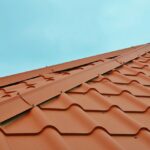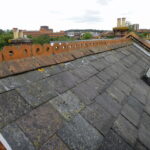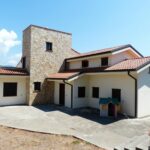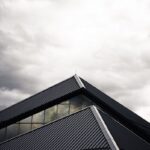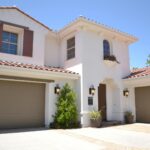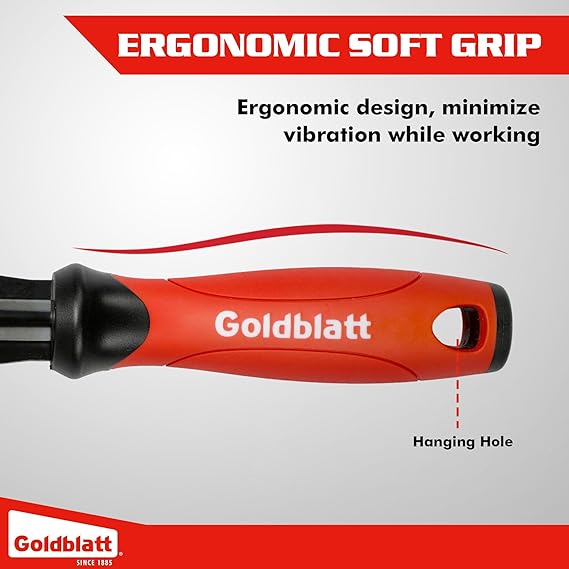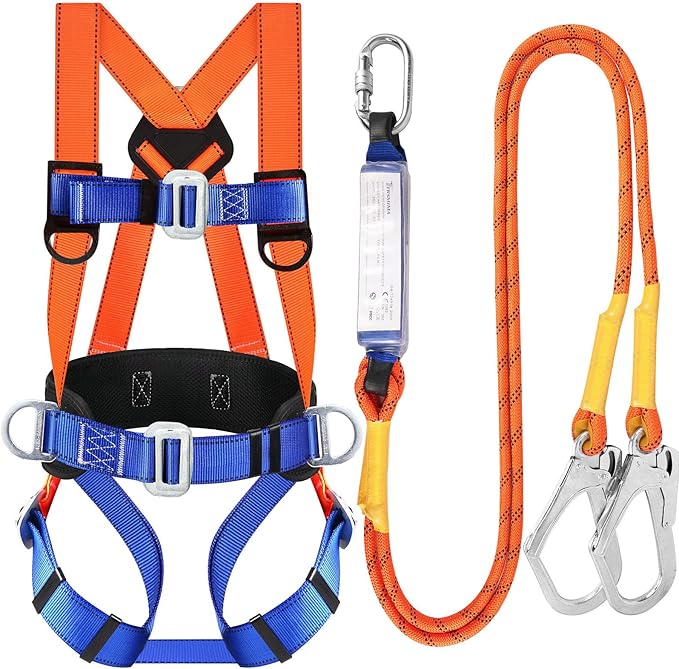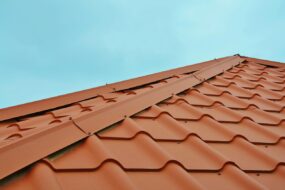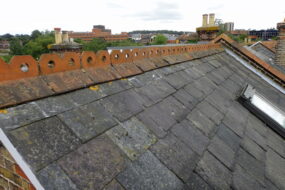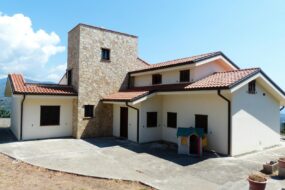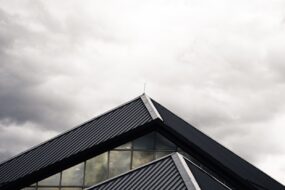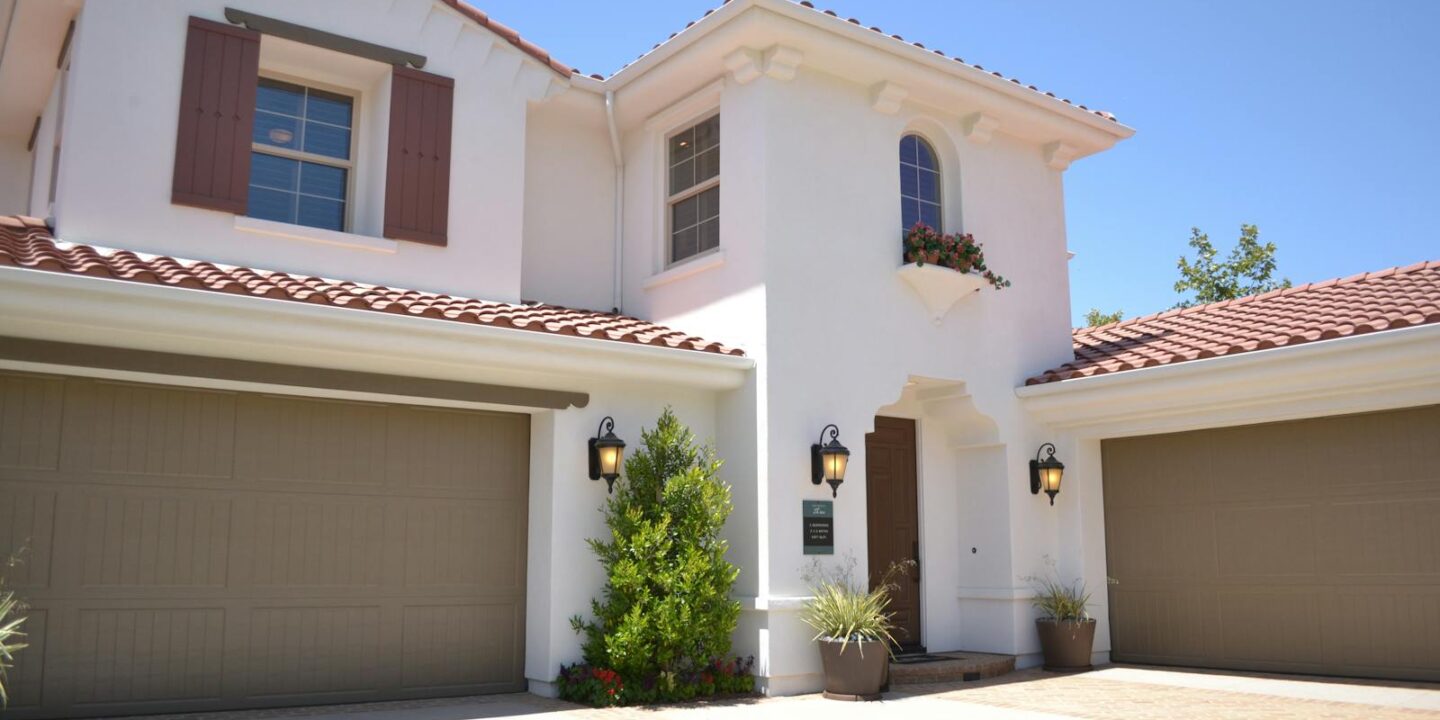
If you’re trying to pin down the cost of a new residential roof, we get it, prices feel slippery. For most homeowners, knowing the average cost and average price of a new roof is crucial for planning a realistic budget. To get a better idea of what your new roof might cost, it’s smart to research and compare quotes from multiple contractors.
Materials went up after 2021, labor hasn’t gotten cheaper, and Washington’s wet seasons don’t cut us any slack. The good news: there’s a clear way to think about the numbers, by size, material, and the handful of variables that actually move the price. These cost factors—such as roof size, material type, complexity, and location—are essential for most homeowners to understand so they can make informed decisions. Understanding your new roof cost is key for budgeting and planning your project. The choice of roof material plays a major role in determining the overall cost, durability, and ongoing maintenance needs of your new roof. We’ll lay it out plainly, with what we’re seeing across the Pacific Northwest and what national data suggests.
Roof Replacement Costs At A Glance
For a typical single-family home (about 1,700–2,200 sq. ft. of living space), the roof replacement cost in 2025 commonly lands between $10,000 and $28,000 for architectural asphalt shingles in our region. The average roof replacement cost for homes in this size range nationally is often reported between $12,000 and $20,000, depending on location and materials. That’s a wide band, yes, because pitch, layers, and complexity can swing it thousands either way.
On a per-square basis (a “square” = 100 sq. ft. of roofing), asphalt shingle systems often run $450–$900 per square installed in Washington. A ‘roofing square’ is the standard unit of measurement used by contractors, equal to 100 square feet, and helps estimate both material and labor costs for the project. Roofing companies charge per square foot or per square, and these charges can vary significantly based on the roofing material, roof size, and the complexity of the installation.
When breaking down costs, roof replacement labor typically makes up a significant portion of the total expense, often around 60%. We also look at what national benchmarks show. Remodeling’s 2024 Cost vs. Value Report tracks roof replacement costs trending up year-over-year nationally, even if they vary by market. It’s not a perfect proxy for your home, but it’s a good gut-check: prices have stayed elevated post-2021 and aren’t snapping back to 2019-era budgets anytime soon. The average price for a roof replacement serves as a useful benchmark, and average prices for different roofing materials—like asphalt shingles, metal, or tile—help homeowners understand what to expect for typical roof costs. Source: Remodeling Cost vs. Value 2024 (https://www.remodeling.hw.net/cost-vs-value/2024/).
One quick curveball: timing. Spring and early summer are busy in Seattle, Tacoma, and Bellevue. Off-peak scheduling can shave a bit off, but rain windows, especially when the Pineapple Express rolls through, can add staging or tarp days. That time is money. To avoid unexpected roof costs, it’s important to get a detailed roof estimate that includes all materials, labor, and potential extras.
Key Factors That Influence Price
Roof size and pitch
Roof area is the base multiplier. The roof’s square footage directly impacts the amount of materials and labor required, and thus the total cost. Both the roof’s square footage, measured in square feet, and the roof pitch are significant factors in determining the overall price of a roof replacement. Costs are often calculated per square foot, so a larger roof with more square footage will require more materials and labor, increasing the overall price. Steeper roofs (think 8/12 and up) slow crews down and require additional safety measures, which bumps labor. Low-slope sections may call for different membranes and detailing. Additionally, how many stories a home has can increase roof complexity and cost, especially for a larger roof.
Tear-off vs. overlay
Most of the time, we recommend a full tear-off. Removing one (or two) layers adds disposal and labor, but it lets us inspect decking, fix rot, and reset flashing correctly. In cases of extensive damage or aging, replacing the entire roof is often the best option for long-term performance and a uniform appearance. Tearing off an old roof with multiple layers requires more labor, which increases the overall cost due to the extra work and debris removal involved. The actual cost of tear-off can vary significantly depending on the number of layers and the type of roofing material being removed. Overlays are cheaper day one, but they mask problems and can void manufacturer warranties.
Decking and structure
We find sheathing surprises more often than folks think, delaminated plywood, soft OSB near eaves, or under skylights. Replacing sheets (often 7/16” or 1/2”) adds materials plus labor. In some cases, only minor repairs to the decking are needed, which can be a more affordable option than full replacement. If rafters or trusses need repair, that’s a separate line item.
Flashing, penetrations, and details
Chimneys (especially older masonry in Tacoma and Olympia) need proper step and counter-flashing. Every pipe boot, skylight curb, and valley adds time and materials. Each roof penetration, such as vents or chimneys, requires careful roof flashing to prevent leaks and additional costs. The more intersections, the more precise the work, and the bill, gets.
Material selection and warranty
Upgrading from 3-tab to architectural shingles changes cost and lifespan. Three tab shingles are a basic, less expensive roof type, but they often do not meet modern wind code requirements. The choice of roof type and roof material significantly impacts both material costs and the overall price of the project. Jumping to standing seam metal, concrete tile, or synthetic slate moves both substantially. Choosing a metal roof offers exceptional durability, a range of material options, and long-term value, but comes with higher upfront installation costs compared to asphalt shingles. We also account for enhanced wind ratings and impact resistance, helpful when winter gusts barrel down the Sound. When considering warranties, it’s important to look at the contractor warranty, which can include annual checkups and minor repairs.
Market conditions
The Bureau of Labor Statistics’ Producer Price Index shows roofing material volatility since 2021, with prices elevated through 2024 and uneven relief in 2025. Reliable cost data from industry sources helps homeowners understand and anticipate these changes in roofing prices, providing a clearer picture for project planning. Translation: quotes can shift with supply. Source: BLS PPI (https://www.bls.gov/ppi/).
Code and climate requirements
Washington’s building codes and local amendments can require specific underlayments (ice and water at eaves/valleys in colder microclimates). A water barrier is a critical code requirement in areas prone to water infiltration, such as edges, ridges, and valleys, helping to prevent leaks and damage. Check the Washington State Building Code Council for current adoptions (https://www.sbcc.wa.gov/) and, for city-specific permitting, Seattle SDCI (https://www.seattle.gov/sdci/permits/).
Costs By Roofing Material And Lifespan
Let’s talk real-world ranges. We’re focusing on installed costs (labor + materials) per square, then what you can expect for lifespan if it’s installed right and maintained. Installation costs can vary significantly depending on the roof material you choose and the complexity of the roof installation. For roof replacements, especially those involving premium materials or complex designs, you may need additional permits and careful planning to ensure compliance and long-term performance. The cost per square foot will vary by material, with premium options costing more and budget materials costing less. Labor cost and labor costs make up a significant portion of the total expense, and these can fluctuate based on factors like roof design, accessibility, and the amount of work required.
Architectural asphalt shingles
We like architectural shingles for value. They handle our rainy months well, provided the underlayment is sound and flashing is tight. Energy-wise, lighter colors or reflective options can help a bit under summer sun. Installing a new asphalt shingle roof offers a solid return on investment and is a popular choice for many homeowners.
Designer asphalt or SBS-modified shingles
- Installed range: $700–$1,200 per square
- Lifespan: 25–35 years
Heavier mats, better wind ratings, and deeper profiles. If you’re near the water and catch frequent gusts, the upgraded adhesive strips are worth it.
Standing seam metal
- Installed range: $1,100–$1,700+ per square
- Lifespan: 40–70 years
We’re fans of standing seam for durability and clean lines. Metal roofs, including standing seam and other metal roofing types, are known for their longevity and premium quality. Metal roofing options include materials like steel, aluminum, and copper roofing, with copper roofing being a lightweight, visually appealing, and long-lasting premium choice. It sheds moss better than shingles, which, honestly, is half the battle west of the Cascades. Pairing with a cool roof finish can reduce heat gain: see DOE Energy Saver on cool roofs (https://www.energy.gov/energysaver/cool-roofs).
Screw-down (exposed fastener) metal
- Installed range: $700–$1,200 per square
- Lifespan: 25–40 years
Lower upfront cost than standing seam, but more maintenance because fasteners can back out and washers age.
Cedar shake or shingle
- Installed range: $900–$1,600 per square
- Lifespan: 20–35 years (maintenance-heavy in damp, shaded lots)
Looks gorgeous under our evergreens but needs vigilant care, moss control, cleaning, and airflow. The romance is real: so is the upkeep. Wood shingles, often made from cedar, pine, or spruce, are valued for their traditional appearance but require regular upkeep.
Concrete or clay tile
- Installed range: $1,200–$2,000+ per square
- Lifespan: 50+ years
Heavy, which may require structural review. Excellent longevity. Clay tiles are especially durable and can last for decades, but they may become brittle over time, so periodic inspection and replacement of damaged tiles is important. We budget for upgraded underlayment and flashings because tiles themselves last far longer than the layers beneath.
Natural slate
- Installed range: $2,000–$3,500+ per square
- Lifespan: 75–100+ years
A legacy roof, if you want the last roof you’ll buy. Needs a slate-experienced crew (not all do). Slate roofs and slate tiles are among the most durable roofing options available, with lifespans of up to 150 years and higher upfront costs, but they offer exceptional longevity and low maintenance compared to other materials.
Composite/synthetic slate or shake
- Installed range: $900–$1,600 per square
- Lifespan: 40–50 years
Lighter than the real thing, kinder to structure, and consistent in color/texture. Good option when you want the look without the weight.
A quick energy side note: cool-rated metal or shingles can reduce surface temperatures significantly, which may ease attic heat loads in summer: see ENERGY STAR roof products (https://www.energystar.gov/products/building_products/roof_products). And because attic insulation affects roof life and comfort, peek at DOE guidance on insulation levels (https://www.energy.gov/energysaver/insulation).
Additional Line Items And Hidden Costs
Underlayment upgrades
Synthetic underlayment, high-temp peel-and-stick in valleys, and ice-and-water at eaves add protection and some cost. In foothill areas prone to ice dams, we spec more self-seal membrane.
Decking replacement
We price sheathing by the sheet. If we discover rot, we’ll replace what’s needed: photos help you see exactly why.
Flashing and metalwork
New drip edge, gutters, or chimney counter-flashing can appear as separate lines. Skylight re-flashing, or replacement if the unit is older, often makes sense while we’re there.
Ventilation improvements
Ridge vent, intake vents, and baffles matter.Poor airflow shortens shingle life and can invite mold. Energy costs are still high in 2025, so optimizing attic ventilation plus insulation is a smart twofer.
Disposal, permits, and staging
Dump fees, especially around King County transfer stations, have climbed. Permits vary by jurisdiction: Seattle’s portal details what’s needed for your scope (https://www.seattle.gov/sdci/permits/). Steeper roofs may require extra scaffolding.
Insurance, hail, and wind
If a covered peril is involved, your insurer may pay part or all of the replacement. Working with your insurance company is essential to ensure coverage for roof damage and to avoid issues with claims or warranties. Policies and deductibles differ. We advise clarifying building code upgrade coverage upfront.
One more practicality: federal energy credits don’t generally cover roofs now. IRS guidance on the Energy Efficient Home Improvement Credit excludes most roofing materials, aside from certain insulation or coatings categories. Check the IRS page before assuming a rebate (https://www.irs.gov/credits-deductions/energy-efficient-home-improvement-credit).
How To Estimate Your Roof And Compare Quotes
Start with rough measurements
Grab your home’s footprint from a site plan or mapping tool, multiply by your roof’s complexity factor (simple gable might be 1.1: hips/valleys 1.2–1.4), then divide by 100 for squares. It’s a ballpark, but it helps sanity-check quotes.
Ask for apples-to-apples scopes
Two quotes are only comparable if the scope matches: tear-off layers, underlayment type, ice-and-water coverage, flashing details, ventilation upgrades, fastener specs, and the exact shingle or panel model. If ridge vent is included on one but not the other, that’s not the same job.
Clarify warranties
There’s manufacturer warranty (product + system) and contractor workmanship warranty. We prefer written workmanship terms and registration for any enhanced manufacturer coverage if available. FORTIFIED Roof standards are worth exploring for wind-driven rain resilience (https://fortifiedhome.org/roof/).
Vet the contractor
License, insurance, recent local references, and jobsite photos say a lot. Homeowners should obtain quotes from several roofing contractors and check that each contractor has proper licensing, insurance, and strong references. Top contractors typically use premium roofing materials and offer extended warranties, ensuring high-quality workmanship and reliability. We also peek at safety practices, steep-slope work in November rain isn’t a place to cut corners.
Talk schedule and change orders
When does the crew actually start, how long is the tear-off/install, and what happens if we uncover hidden rot? A transparent unit price for sheathing or fascia replacement avoids surprises.
Consider season and climate fit
As the rainy season edges in (hi, October), we plan for weather windows and cover-ups. Some materials need dry installs to warrant properly: it’s worth waiting a week if the forecast looks dicey. Delaying necessary work can lead to issues like rot or algae growth, which may result in needing a roof replacement sooner and increase your overall costs. To save money on your roof replacement, consider scheduling during off-peak seasons or selecting budget-friendly materials.
Conclusion
The cost of a new residential roof in 2025 sits at the intersection of size, material, and detail work, plus our moody PNW weather. For many homes, a quality architectural shingle system will land in the mid-to-upper teens, with metal or specialty materials stretching above that. We nudge clients to think in total value terms: proper tear-off, ventilation, flashing, and a crew that stands behind its work.
We almost forgot to mention: if you’re on the fence about timing, shoulder seasons can work beautifully, provided we watch the forecast and stage smart. Get two or three detailed quotes, compare the scopes line by line, and don’t hesitate to ask, “What did we miss?” It’s your roof over your people. Let’s get it right the first time.
Cost of a New Residential Roof: FAQs
How much does a new residential roof cost in 2025?
In the Pacific Northwest, the cost of a new residential roof typically runs $10,000–$28,000 for architectural asphalt shingles on a 1,700–2,200 sq ft home. Pitch, tear‑off layers, decking repairs, flashing details, and scheduling all move the number. Material prices remain elevated post‑2021, so quotes vary by supply and timing.
What is the roof replacement cost per square, and what does a “square” mean?
A “square” equals 100 sq ft of roofing. In Washington, architectural asphalt shingle systems commonly cost $450–$900 per square installed. Metal, tile, and slate run higher—often $1,100–$1,700+ per square for standing seam metal, with tile and slate exceeding that. Steeper pitches and complex roofs push per‑square labor upward.
Which roofing material gives the best value for the cost of a new residential roof?
For overall value, architectural asphalt shingles usually win: $450–$900 per square installed with a 20–30‑year lifespan when ventilated well. Designer asphalt boosts wind performance at higher cost. Standing seam metal costs more upfront but lasts 40–70 years and resists moss. Synthetic slate/shake balance weight, look, and 40–50‑year durability.
When is the best time to replace a roof to save on costs in Washington?
Spring and early summer are busiest in Seattle–Tacoma–Bellevue, so prices and lead times can rise. Off‑peak or shoulder seasons may trim costs, but rain windows add tarp or staging days. Plan around forecasts—some materials require dry installation—and confirm how weather delays are handled in your quote and schedule.
How long does a roof replacement usually take?
For an average single‑family home, an asphalt shingle roof replacement typically takes 1–3 working days once tear‑off begins. Standing seam metal or complex roofs can run 3–5+ days. Add time for decking repairs, multiple layers, steep pitches, or inspections. In rainy climates, weather holds can extend the schedule.
How much contingency should I add to the cost of a new residential roof?
Set aside a 10–15% contingency on the cost of a new residential roof. Hidden sheathing rot, additional flashing, skylight re‑flashing, ventilation upgrades, higher dump fees, or weather‑related staging can add line items. Ask for unit pricing (per sheet of decking, per linear foot of flashing) to control overages.
